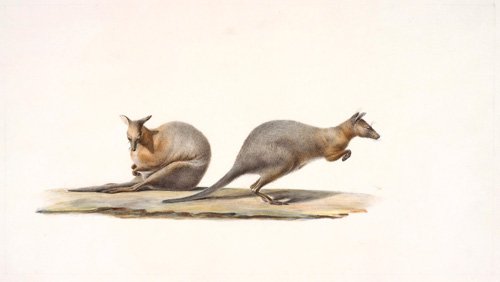Napoleon’s fascination with Australia revealed

NAPOLEON: REVOLUTION TO EMPIRE, now showing at the National Gallery of Victoria in Melbourne, details an expedition sent by Napoleon to Australia in 1800, under artist Nicolas Baudin.
According to the exhibition’s senior curator, Ted Gott, it was a voyage of discovery, not of colonisation.
“His ships were called the Geographe and the Naturaliste, not the Invader and the Conqueror,” says Ted. “But the question is there: if Napoleon hadn’t lost Waterloo, would he have ended up colonising Australia?”
Napolean sought Aboriginal artefacts, emus and kangaroos
Baudin was under orders to gather examples of Australian flora and fauna and return them to French shores, particularly for Napoleon’s wife, Josephine, a lover of plants and of all things Australian.
In addition to Aboriginal artefacts such as shields and spears, Baudin’s voyage returned with 200 live plants for Josephine’s garden at the Chateau de Malmaison, 12km from Paris.
“That they kept alive 200 plants on a voyage that’s over six months, on a ship going through all different climes, is incredible,” Ted told Australian Geographic.
Perhaps more incredible was the successful transport of Australian animals. “It was like Josephine’s ark. Baudin was instructed to bring back one of everything,” says Ted. The ship’s crew reportedly kicked officers out of their cabins, filling them with emus, kangaroos and black swans.
The animals were fed bread soaked in wine for the entirety of the return voyage. “It’s remarkable that they survived at all,” Ted remarks. “And, incredibly, these creatures outlived Napoleon and Josephine.”

Morore, man of New Holland (1802-04), painted by Nicolas-Martin Petit, a member of the French expedition to Australia.
Australian treasures brought back to France for Napolean
Baudin’s expedition brought two black swans to Malmaison for Josephine, a male and a female. “Of all the animals Josephine had, the black swans were the rarest,” says Ted. “Rich people would come to Malmaison to say hello to Josephine and see her black swans.” When the swans reproduced, Ted says, Josephine became the first person in history to breed black swans in captivity.
Baudin was given special instructions by France’s Society of Mankind to document the native population of Australia. “Baudin had been briefed on how to interact respectfully with the native people,” says Ted, adding that the interactions with the Aborigines were “quite friendly.”
He describes an interaction with a Tasmanian tribe in which Baudin’s people stripped down and smeared charcoal on their bodies, so as to appear more familiar to the Aborigines.
Myths surrounding Napoleon
The exhibition portrays young Napoleon as an attractive and much-loved military leader within France, which Ted admits may defy the understanding many Australians have of the man’s character. “The first misconception about Napoleon is that he was short – he was actually 169cm tall – he was average [for the time].”
Ted says the British produced extensive anti-Napoleon propaganda following his downfall. “All of us have been raised with an English point of view about Napoleon, because history is written by the winners,” says Ted. “We’re raised to think of him as a predatory ogre, but this exhibition shows that there are many other sides to Napoleon.”
The fascination with Australia extended beyond Napoleon and Josephine, to the public of France. “In the early 1800s, Australia was the most exotic, exciting and unexplored place on the planet,” says Ted. “So it isn’t surprising that Napoleon and Josephine, wanting to be world leaders and trendsetters, would have wanted to know the most about Australia.”
A book of Captain Cook’s voyages, which Napoleon was reading during his ultimate exile and up until the time of his death, is also on display. The book is a symbol of Napoleon’s love for exploration and, particularly, for Australia — a love which endured throughout his later life.
Napoleon: Revolution to Empire is on at the National Gallery of Victoria until 7 October, 2012.

Kangaroos (1802–04), watercolour by Charles-Alexandre Leseur part of the French voyage of discovery – now at the Museum d’Histoire naturelle, Le Havre. (Photo: Alain Havard)
RELATED STORIES




